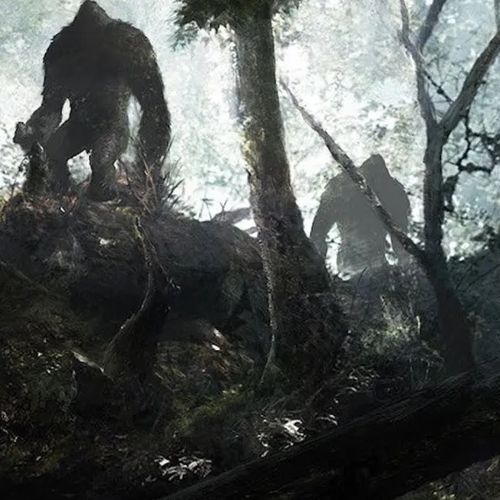
| Added | Wed, 17/11/2021 |
| Источники | |
| Дата публикации | Tue, 02/05/2017
|
| Феномены | |
| Версии |
Hundreds of enthusiasts go in search of a mythical creature every year, but their attempts always end in failure. The maximum that cryptozoologists can hope for is traces of dubious origin on the ground and photographs of similar quality.
As for the videos, which, for quite understandable reason, are much smaller than photographs, in most cases they are just fakes, in others they are well-known creatures (including humans), mistaken for bigfoot.
The authors of the fake shootings may have different goals, but it is precisely such "evidence" that still keeps afloat the long-standing myth about the supposedly relic hominid that has survived to this day. Today, scientists are probably putting a fat end to the identification of a creature called bigfoot, yeti, bigfoot, sasquatch, etc. An international group of researchers, including British scientists, as well as their colleagues who work in France, Germany, Switzerland and the USA, decided to find out if there is a yeti, as well as its relatives, for example bigfoot. To do this, they requested from different countries where they allegedly saw these strange creatures, samples of their fur and other fragments discovered by "eyewitnesses". In response, they were sent as many as 57 samples.
They were sent bigfoot wool from the USA, oran pendek hairs from Sumatra — a creature that is described as a hobbit, fragments of yeti from India and Nepal, hairs of the "southern relative" of the bigfoot — migyar from Bhutan, and fragments of the wool of the "Mongolian bigfoot" — almas from Russia. Of the samples available to the researchers, as many as 36 turned out to be suitable for research. Scientists isolated 126 mitochondrial RNAs from the wool samples of all these fantastic creatures, and then by analyzing them, they determined which creatures they actually belong to. Among other things, the scientists conducted macroscopic, microscopic and fluorescent analyses of all samples.
Although interesting details of the study are certainly available. For example, it turned out that the samples sent from India and Bhutan belong to a giant polar bear (Ursus maritimus tyrannus) that lived in the Pleistocene epoch or one of its relatives.
According to scientists, this suggests that either these animals or representatives of this subspecies, as yet unknown to science, lived in these territories. Moreover, the sample sent from India turned out to be quite "fresh": according to the person who sent it, it belonged to a creature he killed about forty years ago.
The hunter said that this bear was much more aggressive and larger than its relatives. In addition, it had an unusual color. At the same time sent from the United States, the hair samples Bigfoot turned out to be owned by raccoon (Procyon lotor), domestic sheep (Ovis aries), the black American bear (Ursus americanus), North American porcupine (Erethizon dorsatum), coyote (Canis latrans), domestic horse (Equus caballus), domestic cow (Bos taurus taurus), white-tailed deer (Odocoileus virginianus).
Moreover, one of the samples sent turned out to belong to a human (Homo sapiens). The most unusual sample of hair covering was sent from Sumatra. It turned out that he belongs to a very rare animal - the tapir (Tapirus indicus). And from Nepal they sent the hair that someone tore out of the goat-gray (Capricornis).
However, the author is not sure that these results will cool the ardor of cryptozoologists and other bigfoot fans. The authors of the study themselves hold a similar opinion:
"I don't think our research will put an end to the debate about the existence of various fantastic creatures. Nevertheless, it proves that many evidences of their existence actually have nothing to do with them."
By the way, in February of this year, he hosted a podcast that was just dedicated to Bigfoot, where he examined in detail the most famous "evidence" of the reality of the Yeti to date. The results are also disappointing.
Новости со схожими феноменами
Новости со схожими версиями
Log in or register to post comments




















